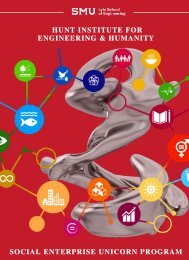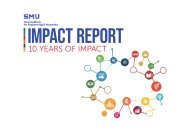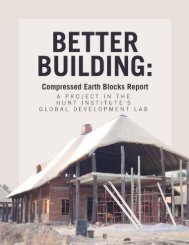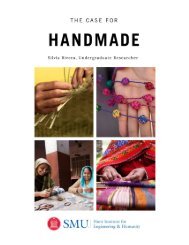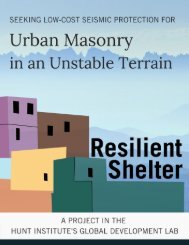Assessment of Rwanda Refugee Camps in the Context of the Villagization Process
Undergraduate researcher for the Hunt Institute for Engineering and Humanity and Engaged Learning Fellow Sienna Dugan, researched secondary sources and primary research through site visits, participatory observation, and interviews with key informants to compile this report which is structured like a case study with additional literature review. All photography is original to the student from her in-field research.
Undergraduate researcher for the Hunt Institute for Engineering and Humanity and Engaged Learning Fellow Sienna Dugan, researched secondary sources and primary research through site visits, participatory observation, and interviews with key informants to compile this report which is structured like a case study with additional literature review. All photography is original to the student from her in-field research.
You also want an ePaper? Increase the reach of your titles
YUMPU automatically turns print PDFs into web optimized ePapers that Google loves.
3.0 Results
3.1 Objective 1
This assessment identifies high priority needs of the refugee camps in Rwanda primarily
focused on Mahama Camp. As of March 2018, Rwanda hosted 177,369 refugees and asylum
seekers of which 44.5% derived from the Democratic Republic of Congo; hosted in five camps
and 55.1% from Burundi; hosted in Mahama Camp and other urban areas. Overall, 0.4% of
refugees in Rwanda are neither from the DRC or Burundi. The rate of people arriving from
Burundi has decreased since the outbreak of political violence in 2015. However, the overall influx
into Rwanda is currently about 150 people per week. According to UNHCR, the period of greatest
risk for refugees are the first few weeks of entry into camps. Preventative measures for outbreak;
initial physical examinations; simple inoculations; and continuing health care are not currently
available to generate sufficient impact in these areas. Once oriented, refugees still experience
immense risk in the form of disability, serious medical conditions, food security and in
consequence malnutrition, dependency syndrome, violence, poverty and much more.
13




